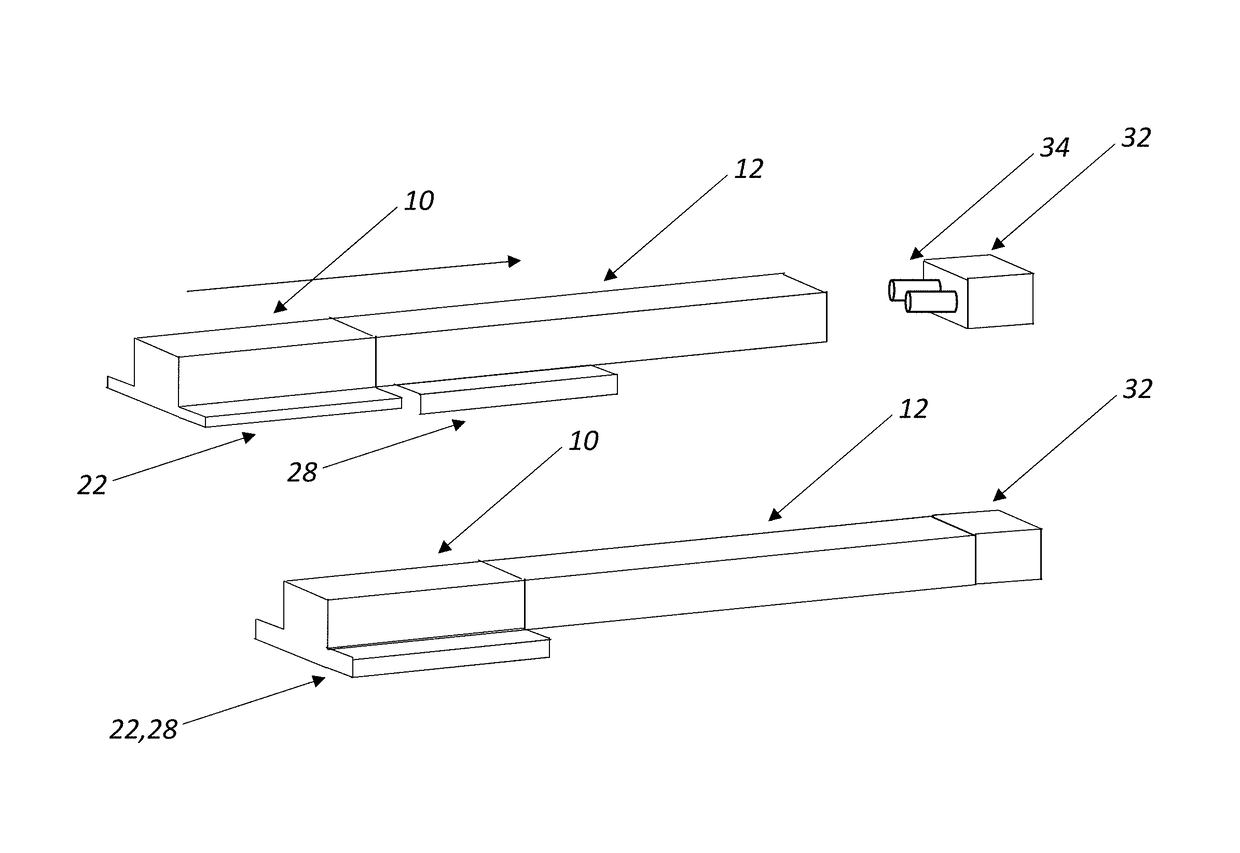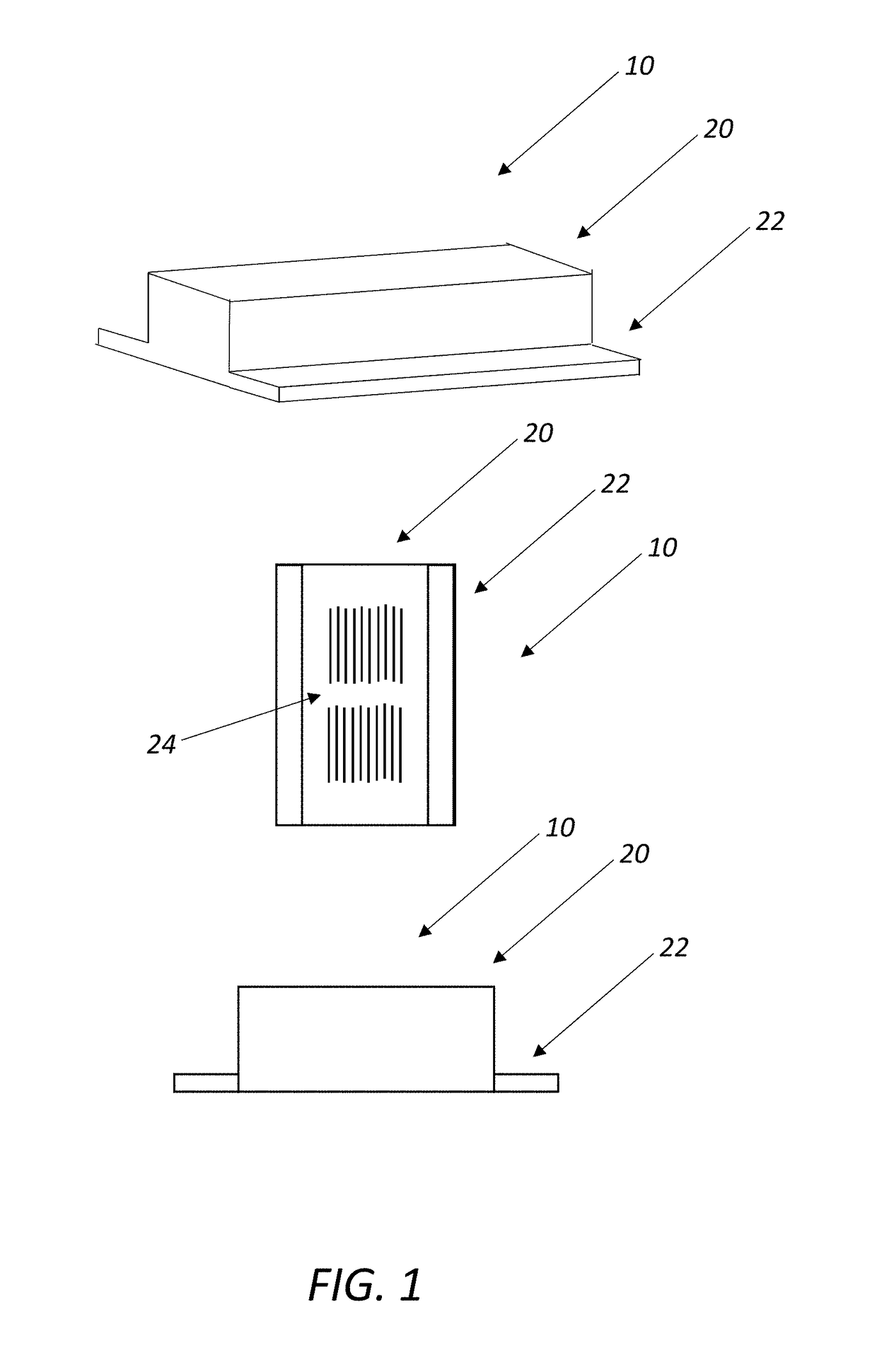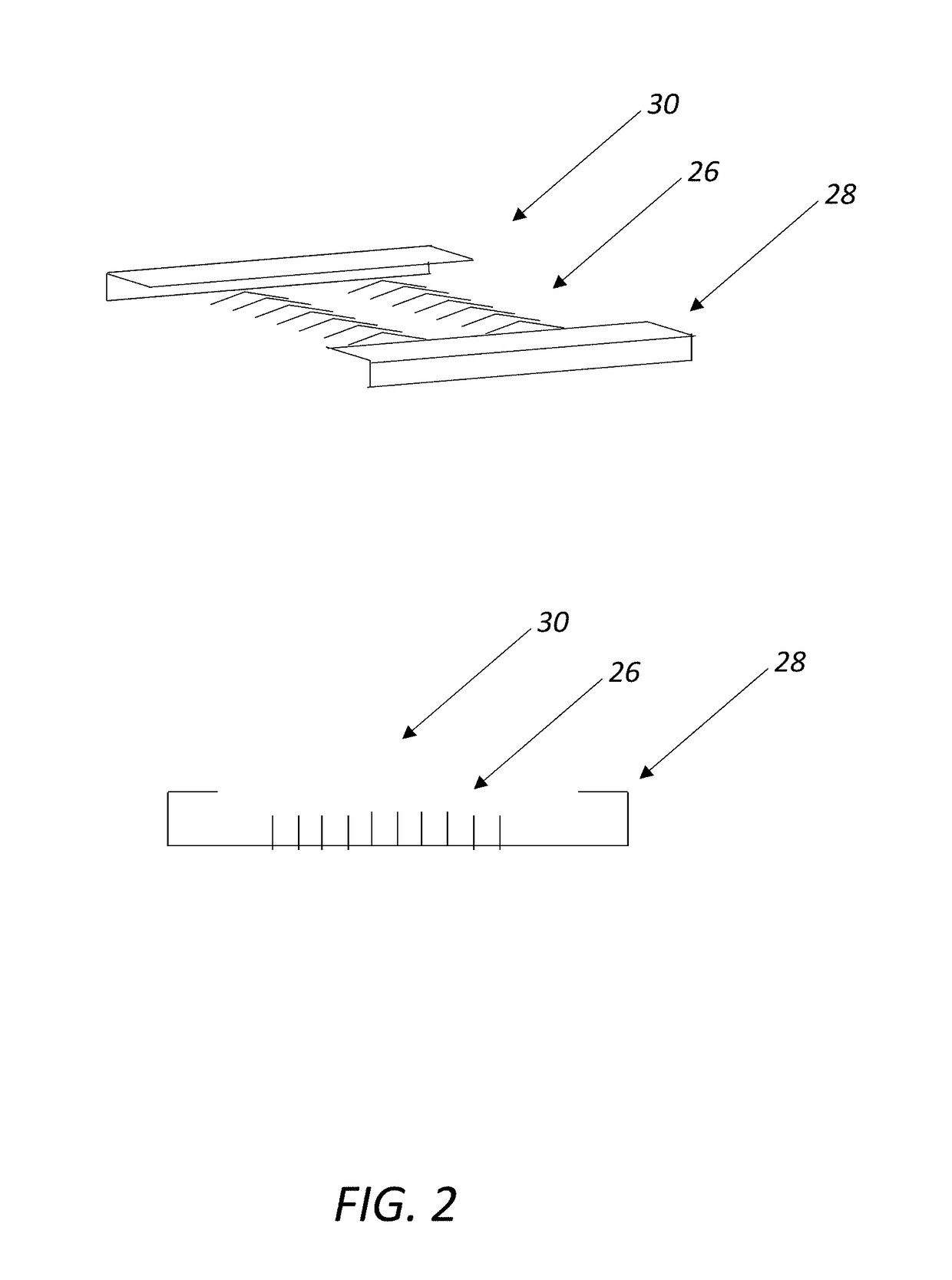Mid-board pluggable optical devices, assemblies, and methods
a technology of optical devices and assemblies, applied in the direction of coupling device connections, instruments, electrical equipment, etc., can solve the problems of inability to achieve msa consensus, inability to efficiently mitigate equipment, and new transceiver form factors, etc., to improve spatial efficiency and security of optical fiber management and transceiver-to-optical fiber connectivity, reduce power consumption, and improve the effect of spatial efficiency and security
- Summary
- Abstract
- Description
- Claims
- Application Information
AI Technical Summary
Benefits of technology
Problems solved by technology
Method used
Image
Examples
Embodiment Construction
[0024]Again, the faceplates of conventional data networking systems are typically very crowded with port density. As port density increases, conventional modular designs primarily focus on one insertion method. SFPs slide into a rack along a horizontal plane perpendicular to the faceplate. The SFPs protrude slightly from the faceplate and the optical fibers connect to this protruding portion of the SFPs. Electrical connections are made via horizontal connections at the back of the SFPs. The use of more SFPs, more optical fibers, and more electrical connections provides more capacity, at the expense of faceplate space, including long entanglements of optical fiber.
[0025]Some conventional designs get around faceplate density issues by using mid-board optics (MBOs). This frees up space on the faceplate, allowing the user to implement specialized high density optical connectors. The disadvantage to MBOs is that the end customer essentially loses the modularity of SFPs. With MBOs, one ca...
PUM
 Login to View More
Login to View More Abstract
Description
Claims
Application Information
 Login to View More
Login to View More - R&D
- Intellectual Property
- Life Sciences
- Materials
- Tech Scout
- Unparalleled Data Quality
- Higher Quality Content
- 60% Fewer Hallucinations
Browse by: Latest US Patents, China's latest patents, Technical Efficacy Thesaurus, Application Domain, Technology Topic, Popular Technical Reports.
© 2025 PatSnap. All rights reserved.Legal|Privacy policy|Modern Slavery Act Transparency Statement|Sitemap|About US| Contact US: help@patsnap.com



